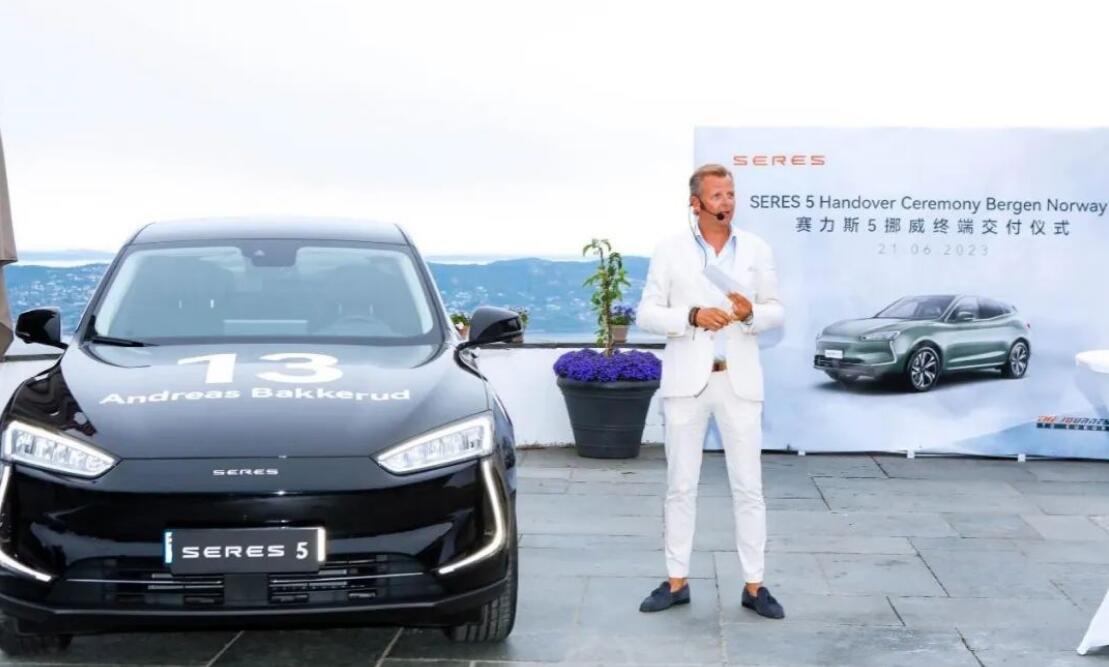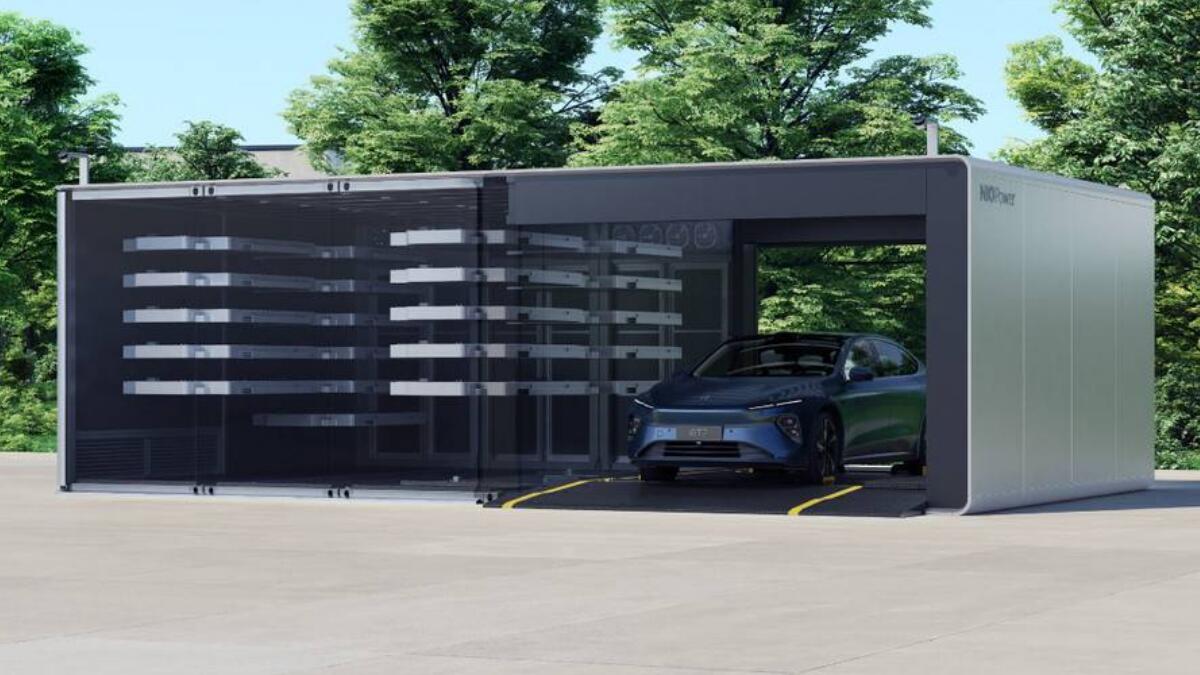
Porsche Macan EV Teased In All-Electric Frauscher Boat Sketch


This means that the penetration of NEVs at retail is expected to be 36.6 percent in June, up from 33.3 percent in May.

Passenger vehicle sales in China are expected to decline this month compared to a year ago, but the performance of new energy vehicles (NEVs) remains strong.
In June, retail sales of NEVs in China are expected to be around 670,000 units, up 26 percent year-on-year and up 15.5 percent from May, according to estimates released today by the China Passenger Car Association (CPCA).
Survey shows that automakers that contribute about 80 percent of passenger car sales are targeting retail sales growth of about 5 percent in June compared with May, the CPCA said.
According to preliminary projections, passenger vehicle sales in China were about 1.83 million units in June, up 5 percent from May but down 5.9 percent from a year earlier, the CPCA said.
The year-on-year decline was due to a high base in June last year, when China's auto market was recovering from the shock of Covid, according to the CPCA.
The CPCA had forecast several times this month that June passenger car sales would be lower than a year ago, one reason being China's halving of purchase taxes on mainstream internal combustion engine vehicles that began last June.
Today's latest estimate implies that NEVs had a penetration rate of about 36.6 percent at retail in June, up from 33.3 percent in May.

Auto market demand dropped slightly in early June, but the market warmed up with the start of the June 18 shopping spree, the release of local government subsidies and the Dragon Boat Festival, the CPCA said.
The overall discount rate in China's passenger car market was about 17.8 percent in mid-June, expanding 0.6 percent from the end of May, according to the CPCA.

Major carmakers averaged 31,100 daily retail sales in the first week of June, down 42 percent from the same period in May, mainly due to a high base of vehicle sales during last month's Labor Day holiday, the CPCA said.
Their average daily retail sales in the second week of June were 42,900 units, down 14 percent from the second week of May.
As promotions kicked off in mid-June, the car market picked up in the third week, with average daily retail sales of 57,500 units, up 21 percent from the same week in May.
In the fourth week, with the arrival of the Dragon Boat Festival holiday, average daily retail sales are expected to be 62,000 units, an increase of 26 percent over the same period in May.
In week five, average daily retail is expected to be 113,700 units, up 32 percent from the same period in May, due to the pulse of the quarter-end sales, according to the CPCA.
The post CPCA expects China Jun NEV retail sales to grow 15.5% MoM to 670,000 appeared first on CnEVPost.
For more articles, please visit CnEVPost.


Seres delivered Seres 5 vehicles to the first European owners in Norway in cooperation with a local dealer.

(Image credit: Seres)
Seres Group -- one of Huawei's key partners in the automotive sector -- has started vehicle deliveries in Europe.
On June 21, Seres delivered Seres 5 vehicles to the first European owners in Bergen, Norway, according to an announcement made by the company based in the southwestern Chinese city of Chongqing on June 23.
Unlike Nio (NYSE: NIO), which follows a direct sales model overseas, Seres delivered the first vehicles in Norway in partnership with local dealer Sandven AS.
Sandven will work with Seres to bring more new energy vehicle (NEV) offerings to Norwegian consumers for the European market, said Trond Sandven, the dealership's founder.

The Seres 5 appears to be the Aito M5 sold in China, a model jointly designed by Huawei and Aito, a brand jointly launched by Huawei and Seres.
The Seres Chinese website currently shows only the Aito series of models, including the Aito M5 series and the Aito M7 series.
The four-wheel drive version of the Seres 5 has a total output of 430 kW and can accelerate from 0 to 100 km/h in 3.7 seconds, according to Seres.
The model is available in battery electric vehicle (BEV) and extended-range electric vehicle (EREV) versions to meet the diverse mobility needs of customers worldwide, Seres said.

(Seres rotating chairman and president Zhang Zhengping delivered the vehicle to the first Seres 5 owner in Norway.)
The Seres 5 BEV has a WLTP range of 500 kilometers for the two-wheel drive version and 530 kilometers for the four-wheel drive flagship version, the company said.
On full fuel and power, the Seres 5 EREV has a combined range of more than 1,000 kilometers, it said.
Seres did not reveal whether the first vehicles it delivered in Europe were the Seres 5 BEV or the Seres 5 EREV, though its announcement features a model with a front face that matches the all-electric version of the Aito M5.
This is the latest development in Seres' efforts to reach overseas markets.
Seres unveiled the Landian brand on March 30 and made its first model, the plug-in hybrid E5, available.
Equipped with technology from Huawei and BYD, the Landian E5 is a mid-size SUV available in 5- and 7-seat versions, with a starting price of RMB 139,900 ($18,490) in China.
On May 25, Landian shipped the first 500 Landian E5 vehicles to overseas markets.
Huawei officially announced on April 20, 2021 that it would start selling cars in its flagship stores, with the first model being the Seres SF5 SUV, which uses extended-range technology. This model is no longer available in China.
On December 2, 2021, Seres and Huawei jointly launched a premium NEV brand called Aito, followed by the M5 EREV, M5 BEV and M7 EREV.
Originally known as Chongqing Sokon Industrial Group, Seres Group changed its name in August 2022, with Seres as one of its brands.
Seres Group sold 8,562 NEVs in May, down 18.08 percent year-on-year but up 23.78 percent from April, according to data released earlier this month.
($1 = RMB 7.1795)
Seres' sub-brand Landian sends 1st 500 cars to overseas markets

The post Seres, Huawei's auto partner, delivers 1st vehicles in Europe appeared first on CnEVPost.
For more articles, please visit CnEVPost.
Nio's battery swap stations in China have served a cumulative total of more than 24 million times today, averaging more than 50,000 services per day.

(Image credit: Nio)
Nio (NYSE: NIO) has reached a new milestone in the number of battery swap stations in China, as it continues to build its iconic replenishment facility.
Nio today put five new battery swap stations into operation in China, bringing the total to 1,500, 410 of which are located along highways, according to data released today by the electric vehicle (EV) maker.
At the same time, Nio's battery swap stations in China have accumulated more than 24 million services today, averaging more than 50,000 services per day.
On average, a vehicle leaves Nio's battery swap stations with a fully charged battery every 1.8 seconds, the company said, adding that more than 60 percent of NIO vehicles' power comes from these stations.
Currently, 72.44 percent of Nio owners can find a battery swap station within 3 kilometers of their home or office, Nio said.
Here's a video Nio shared on its mobile app about the historical changes in the number of its battery swap stations.
In addition to providing Nio owners with fully charged batteries, battery swap stations are small, distributed energy storage sites.
Nio's 1,500 battery swap stations can store a total of about 1.36 million kWh of energy, saving about RMB 300 million yuan a year in electricity costs in China, considering that electricity costs are lower at night, the company said.
These stations can also participate in load regulation on the grid, helping it accommodate more electricity generated from clean energy sources such as wind and photovoltaics, Nio said.

Nio allows consumers to purchase vehicles that include batteries, or rent batteries without buying them. In addition, the company allows owners who have purchased or leased a 70-kWh or 75-kWh standard-range battery pack the flexibility to upgrade to a 100-kWh long-range pack.
To date, Nio has provided more than 80,000 flexible battery upgrades, it said.
Nio also put 10 supercharging stations into operation today, bringing the total to 1,450, offering 7,156 charging piles. It added an additional 2 destination charging stations today, bringing the total to 1,277, offering 9,048 charging piles.
Nio completed its first battery swap station in Shenzhen on May 20, 2018. Its initial 200 battery swap stations are first-generation facilities, with its first second-generation battery swap station coming into operation on April 15, 2021.
Nio's third-generation battery swap station, unveiled at the Nio Day 2022 event on December 24, 2022, can store up to 21 battery packs, up from 13 in its previous generation and five in the first generation of the facility. These latest-generation stations began operations on April 12.
Nio announced plans late last year to add 400 battery swap stations by 2023, though that plan was raised to 1,000 on February 21.
William Li, Nio's founder, chairman and CEO, said at the time that the company would further accelerate the deployment of battery swap stations, with a goal of having more than 2,300 battery swap stations in China by the end of 2023.
The company will deploy about 100 battery swap stations in June and more quickly thereafter, which will help boost sales, Li said during Nio's first-quarter earnings call on June 9.
Nio has added a total of 52 battery swap stations so far this month, according to data monitored by CnEVPost.
Nio added a battery swap station in the Netherlands on June 22, bringing the number of such stations in the country to six.
To date, Nio has 17 battery swap stations and 8 charging stations in Europe.

The post Nio reaches 1,500 swap stations in China as it aims for 2,300 by year-end appeared first on CnEVPost.
For more articles, please visit CnEVPost.
Updates you may notice include that we will be using "Nio" instead of "NIO" as before, and will be using "Xpeng" instead of "XPeng".
When I graduated from college and joined China Daily in July 2009, my first major task was to familiarize myself with a dozen-page stylebook.
For an English-language media outlet, a stylebook ensures that all reporters and editors remain coherent in the details of their wording.
When I launched CnEVPost in December 2020, we largely followed the style of China Daily and Reuters in terms of wording details.
In the past couple of years, with a large number of new companies and models in the Chinese EV industry, we started to refer more to company statements or press releases in some of our wording styles.
However, in retrospect, the mainstream international media did not do so, which requires us to update our stylebook in time.
Starting immediately, CnEVPost is moving to the latest 2023 version stylebook, which is our internal operating guideline and will ensure that the wording style will remain consistent, whether it's mine or any other author's articles.
Here are a few updates that you may notice:
We will be using "Nio" instead of the previously used "NIO".
We will be using "Xpeng" instead of "XPeng".
More updates may be made in areas you won't notice, but are important to us, especially regarding the wording style for some EV models.
We will not adjust the wording style of past articles; the latest stylebook will guide our writing going forward, including CnEVPost and CnEVData.
Thanks to all our readers for your support in the past! If you have any feedback, please feel free to leave a message.
Phate Zhang
June 25, 2023
The post We are starting to adopt updated stylebook appeared first on CnEVPost.
For more articles, please visit CnEVPost.

